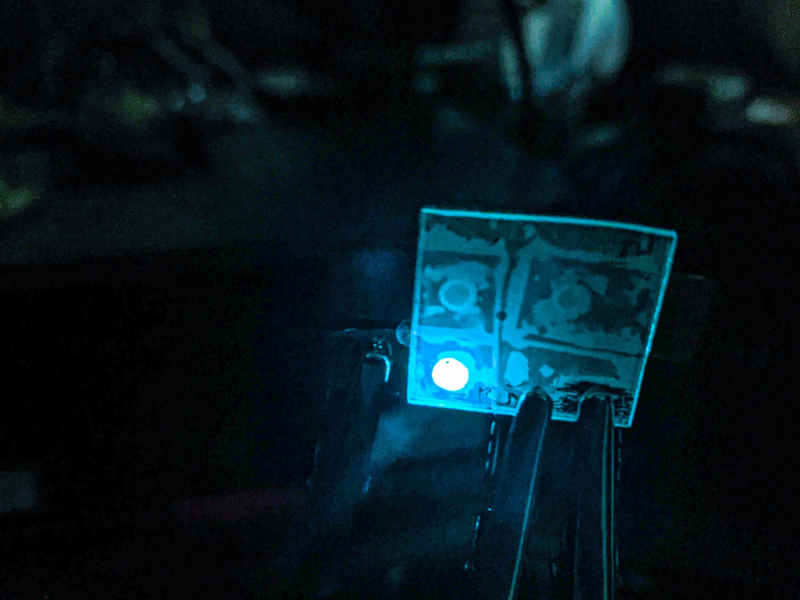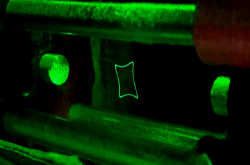Halide perovskites are a class of semiconductor materials. They hold great potential for applications in optics, solar power, and electronics. The material’s properties allow it to generate “cleaner” light than that of existing organic light-emitting diode (OLED) displays made from other materials. Moreover, one of the biggest advantages of perovskite devices over others is the ease and low cost of their production.
The picture seen above depicts a perovskite-based device emitting light at the wavelength of 479 nanometers, which is in the blue light of the visible spectrum. To create the device, researchers have used electrochemical cells in which the emission layer, represented by a thin perovskite-polymer film, is situated between an anode (layer of indium tin oxide (ITO)) and a cathode (Ga-In eutectic).
But making these devices isn’t so simple: in order to produce blue luminescence, it’s necessary to mix chloride and bromide ions within the perovskite. Another drawback that these perovskites have is their instability, which results in a spectrum (color) shift when subject to an electrical current.
In order to produce a stable sample, researchers at ITMO have taken a new approach. The thin film they made included luminescent (CsPbCl1.22Br1.78) and non-luminescent (Cs4PbCl2.24Br3.76) perovskite phases along with polyethylene oxide.
The decomposition of the non-luminescent perovskite phase, which precedes the decomposition of the luminescent phase at the electrical field strength of 5.7 × 10 (times six) V/m−1, has made it possible to create stable devices that emit light in the blue band of the spectrum. This method opens up great prospects for the development of full-color displays and other perovskite-based devices.
The described research was carried out at a laboratory of the Faculty of Physics and Engineering. Experiments were carried out as part of PhD student Tatiana Liashenko’s thesis project under the supervision of senior researcher Dr. Anatoly Pushkarev and principal researcher Dr. Sergey Makarov. Results of the research were published in Nanomaterials. The study was carried out with the support of the Russian Science Foundation (project No. 19-73-30023). One of the project’s goals is to develop stable perovskite-based devices capable of emitting highly clear colors within the entire visible spectrum.





